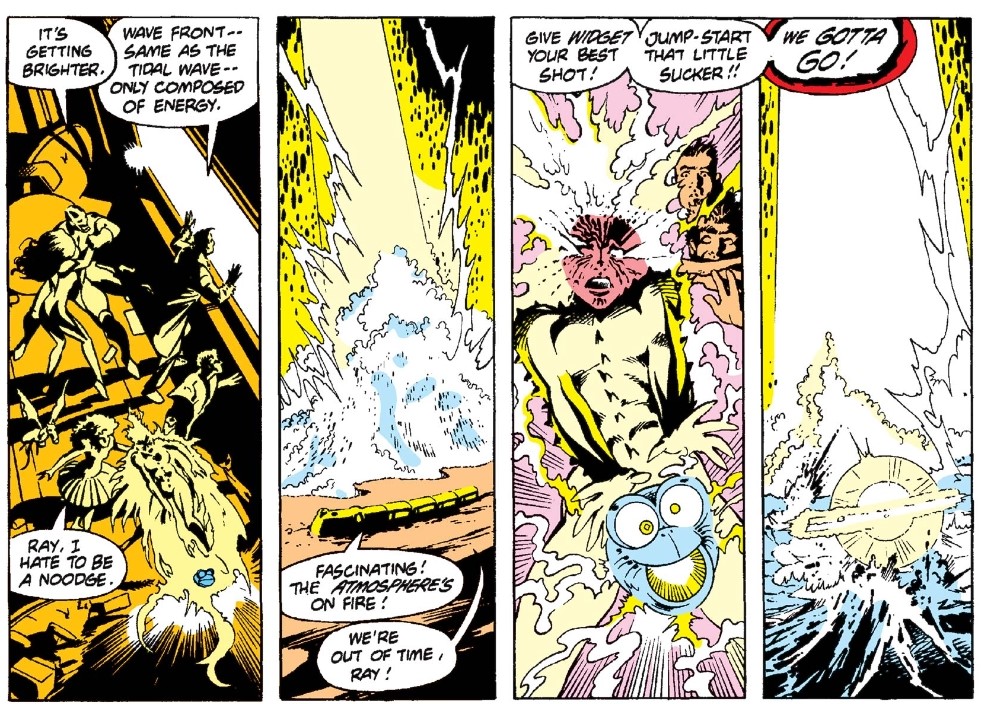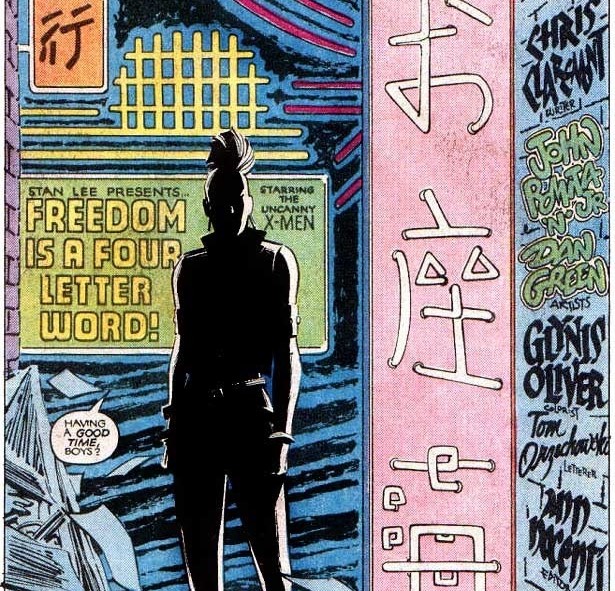Issue #14 of Excalibur features a visual and narrative sequence that offers rich potential for a sexual interpretation (within a series that relishes sexual symbolism) when perceived through that particular interpretive lens. #xmen 1/10 

The centrepiece of this reading is the single panel of Rachel, rippling with energy, reaching toward Widget who is placed at the exact location of her genitals with an almost orgiastic grin upon his face in an example of what's called “yonic imagery.” 2/10 

The narrative of the story only enhances the symbolism through escalating tension building to climax. The entire planet is about to collapse and Excalibur needs to power up Widget in order to escape. The dialogue includes a double entendre in “jump-start that little sucker.” 3/10 

Additionally, the juxtaposition of images surrounding Rachel – a swelling tide of surging water and raw energy on either side of her, and a complete eruption of the entire planet beneath – again contribute to an orgiastic interpretation. 4/10 

To be clear, the text doesn’t require this reading, and it could be incidental to intent, but the text possibly does use subconscious multimodal sexual symbolism in order to create a visceral engagement with the reader, presumably without them knowing it. 5/10 

We should also note that, as much as some might like to dismiss all sexual symbolism as vulgar projection there is indeed tremendous evidence to support that this is something very intentionally integrated into the superhero industry. 6/10 

As Anna Peppard notes in Supersex, “By wearing their underwear on the outside and proudly displaying their exaggeratedly hard and sensuous curves inside revealing, skin-tight costumes, virtually all the most famous superheroes openly invite erotic possibilities.” 7/10 

Now, we can stop here (and good sense suggests we should considering how Twitter debates on this subject can sometimes go) but we can also go further and look at how the specifics of the sexual imagery can contribute to Rachel’s characterization. 8/10 

Rachel has frequently been seen to reject sexual advances in early issues of Excalibur. Portraying the character in a form of symbolic onanism could (arguably) connect her sexuality to her emerging sense of independence – a major theme of her characterization in Excalibur. 9/10 

Finally, from a representational standpoint, the excision of female sexual pleasure in mass media has been the subject of extensive scholarly work. Thus, reading Rachel’s symbolic orgasm (even if completely unintentional) can offer a rare and significant counter-discourse. 10/10 

In a coincidental (by which I mean carefully coordinated) bit of brand synergy, Excalibur 14 is the subject of this weeks’s GGW podcast where we don’t talk about this at all – hence why I decided to write a thread for it and save it for today. goshgollywow.com/episode-archiv…
• • •
Missing some Tweet in this thread? You can try to
force a refresh






















